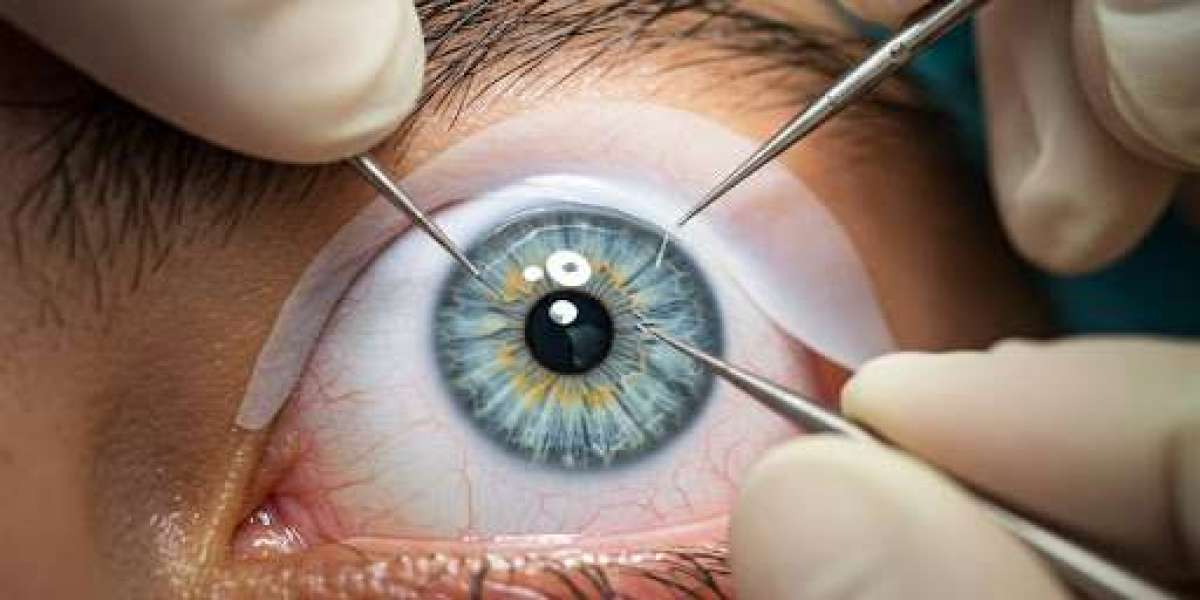LASIK eye surgery is a life-changing procedure that corrects vision and reduces the need for glasses or contact lenses. While the surgery is quick and painless, following proper post-operative care is essential for a smooth recovery. One of the most common concerns after LASIK is whether bending over can affect healing.
Patients are often advised to avoid bending, lifting, or straining immediately after surgery. Understanding why this precaution is necessary and how long it should be followed will help ensure the best possible recovery and long-term vision results.
Why Should You Avoid Bending After LASIK?
Bending over, especially within the first 24 to 48 hours after LASIK, can increase eye pressure. Lowering your head below heart level can lead to a temporary spike in intraocular pressure (IOP), which may disrupt the healing corneal flap created during surgery.
The corneal flap needs time to adhere and heal properly, and sudden pressure changes could lead to complications such as flap displacement or wrinkles. Avoiding unnecessary bending helps maintain stability and prevents excessive strain on the eyes.
How Long Should You Avoid Bending After LASIK?
Doctors recommend avoiding bending, lifting heavy objects, or straining for at least one week after LASIK. The first 48 hours are the most critical period when the corneal flap is most vulnerable.
However, depending on individual healing progress, your doctor may adjust these guidelines. It is always best to follow personalized advice based on your post-operative check-ups.
What Happens If You Accidentally Bend Over After LASIK?
If you accidentally bend over shortly after LASIK, don’t panic. A single, mild instance of bending is unlikely to cause harm. However, contact your eye doctor immediately if you feel sudden discomfort, pain, or vision changes.
Signs that bending may have affected healing include:
- Increased eye redness or irritation
- Blurry or hazy vision that wasn’t present before
- A sensation of something moving in the eye
These symptoms could indicate that the corneal flap has shifted, requiring an urgent evaluation.
What Activities Involve Bending That You Should Avoid?
Many everyday activities involve bending without realizing it. After LASIK, take extra care to avoid:
- Tying shoelaces or picking up objects from the floor – Instead, squat while keeping your head upright.
- Washing your face over a sink – Use a damp cloth instead of splashing water directly.
- Lifting heavy bags or groceries – Ask for assistance or use rolling carts.
- Cleaning and sweeping – Postpone heavy household chores until after recovery.
Being mindful of these activities can prevent unnecessary strain on your eyes.
Can You Bend Down to Pick Something Up After a Few Days?
After the initial 48 hours, you can gradually resume light bending movements but do so cautiously. Instead of bending at the waist, use a squatting technique in which you keep your back straight and lower yourself by bending your knees.
Avoid sudden or forceful movements, and always listen to your body—if you feel discomfort or pressure in your eyes, stop immediately.
Does Bending Affect Eye Pressure After LASIK?
Yes, bending, lifting, or straining can temporarily increase eye pressure, which may interfere with healing. While the increase in pressure is usually mild, repeated strain could lead to flap displacement or delayed healing.
This is why doctors recommend avoiding heavy exercise, weightlifting, or yoga poses that involve inverted positions for at least one to two weeks post-surgery.
Can You Exercise That Involves Bending After LASIK?
Mild physical activity, such as walking, is safe after LASIK, but avoid exercises that involve bending, lifting, or straining for at least a week. Activities to avoid include:
- Yoga poses like downward dog or headstands
- Heavy weightlifting or strength training
- High-impact workouts that cause jarring movements
After a week, you can gradually reintroduce exercise with your doctor’s approval.
Does Bending Affect Tear Production and Dryness?
Bending itself does not directly impact tear production, but eye strain from improper posture can contribute to dry eye symptoms after LASIK. Many patients experience temporary dryness or irritation as their eyes heal.
To maintain moisture and comfort:
- Use preservative-free artificial tears regularly.
- Avoid staring at screens for prolonged periods without blinking.
- Keep your head and eyes relaxed while performing daily activities.
Can You Bend Over While Using Prednisolone Eye Drops?
Since prednisolone eye drops are commonly prescribed after LASIK, it is crucial to use them correctly. Avoid bending immediately after applying drops, as this could cause the medication to drain out of the eye before absorption.
Instead, apply drops while sitting or lying back, and keep your eyes closed for a few seconds to allow proper distribution.
Can You Sleep in a Position That Involves Bending?
Your sleeping posture plays a vital role in LASIK eye surgery recovery. Sleeping face-down or hanging your head off the bed could put unnecessary pressure on the eyes.
To avoid complications:
- Sleep on your back for the first week after LASIK.
- Use protective eye shields to prevent accidental rubbing.
- Avoid pillows that force your head into awkward angles.
Proper sleeping habits contribute to a faster and smoother recovery.
What Is the Best Way to Adjust Your Daily Routine to Avoid Bending?
Adjusting your daily habits can help you avoid unnecessary eye strain. Some helpful tips include:
- Place frequently used items at waist level to avoid bending down.
- Use a long-handled grabber tool to pick up dropped objects.
- Ask for help with household tasks involving lifting or bending.
By modifying daily activities, you can protect your vision while allowing your eyes to heal properly.
Can You Resume Work That Requires Bending After LASIK?
If your job involves frequent bending, lifting, or physical activity, discuss with your doctor when it is safe to resume work. Many patients return to desk jobs within a few days, but physically demanding roles may require a more extended recovery.
If returning to work too soon, take frequent breaks, properly posture, and follow all post-operative guidelines to prevent strain.
When Can You Safely Resume Normal Activities Without Bending Restrictions?
After one week, most patients can resume normal activities, including light bending. However, heavy lifting, strenuous bending, and high-impact activities should be avoided for at least two weeks or until your doctor approves.
Your recovery timeline may vary based on individual healing progress, so always follow personalized medical advice.
Final Thoughts
Bending after LASIK should be avoided during the initial healing period to prevent increased eye pressure and potential flap complications. Making minor lifestyle adjustments can protect your vision and ensure a smooth, stress-free recovery.
Following your doctor’s post-operative instructions, practicing proper eye care, and gradually easing back into daily activities will help you enjoy clear and comfortable vision for years.



